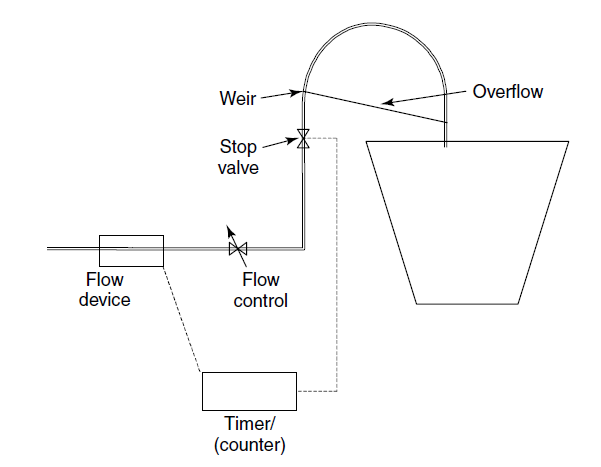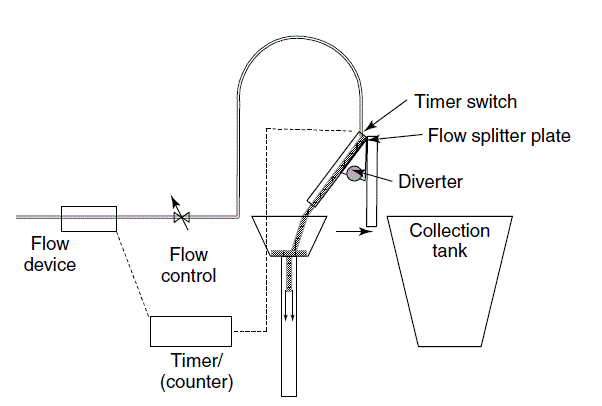Calibration Basics
Calibration is defined as follows: “The set of operations that establish, under specified conditions, the relationship between values of quantities indicated by a measuring instrument or measuring system and the corresponding values realized by standards”.
It is important to recognize at the outset the definition of a ‘calibration’ and to note that the “comparison” applies only to the conditions at the time of the calibration. The purpose of calibration is to increase the confidence in the reading obtained from the flowmeter in service.
Standards for flow measurement are based on a comparison of the quantity of fluid passed, or passing, through the flowmeter with the quantity measured by the standard.
Standards can be based on the measurement of mass or volume. The required mass or volume quantity can be calculated from the measured quantity from a knowledge of the fluid density at the test flowmeter. Standards may be static or dynamic, and this choice is made on the basis of the output and end use of the flowmeter. Some flowmeters are used to measure quantity and have a fast response time; others are designed to measure flow rate and have a slow response time. Calibration of a flowmeter should cover a significant flow-rate range for the flowmeter and establish a performance across that range.
A “standard” for flow calibration should replicate as closely as practicable the conditions under which the flowmeter will be used. Full replication is impossible, and the key to success is to be as close as practicable, and to recognize the nature and performance of the flowmeter type being tested. The factors that should be addressed are the fluid viscosity, the installation effects due to bends and fittings, temperature, and pressure. The standard should also have a defined traceability and uncertainty chosen to match the expectation of the final measurement.
The choice of standard must also recognize the dynamic performance of the flowmeter and the nature and resolution of the output. As a calibration is a comparison, the quantity measured by the standard must match the quantity measured by the flowmeter and this must take cognizance of the resolution of the flowmeter. A flowmeter used to measure very large quantities of fluid over a long period of time may not have a resolution suitable for measuring the smaller quantities measured by a standard.
The result of a flowmeter calibration will normally provide two related figures: one related to the flow rate and the other as a performance indicator. Flow rate will be expressed as mass per unit time, volume per unit time, Reynolds number, or some other flow rate–related measure. The performance indicator relates the expected performance of the meter to the measured performance. Examples of performance indicators are K-factor, error, and meter factor.
GRAVIMETRIC CALIBRATION OF FLOWMETERS
A flowmeter can be calibrated gravimetrically by weighing the quantity of liquid collected in a vessel. The vessel is weighed and the weight (in air) of the fluid collected is noted.
As the quantity of fluid has to be expressed as mass, the weight has to be corrected for the effect of air buoyancy. As a weighing machine is calibrated using weights with a conventional density of 8000 kgm−3, and the fluid collected will have a significantly different density, the upthrust of the air on the tank will have a significant effect.
To determine the volume, the mass is divided by the density determined at the flowmeter. Density can be measured using a densitometer but is more often calculated from a knowledge of the fluid properties and measurements of temperature and pressure at the test meter.
Standing-start-and-finish method
 This method is generally preferred for flowmeters that are used for measuring the quantity of liquids, especially flowmeters for batch quantities.
This method is generally preferred for flowmeters that are used for measuring the quantity of liquids, especially flowmeters for batch quantities.
The required flow rate is established into the tank. The flow is then stopped using a fast-acting valve, the container drained, and the drain valve closed. The flow is restarted, the container filled, and the flow stopped. The weight of liquid is noted along with the time taken to fill the tank. The reading from the flowmeter is also noted. Temperature and pressure of the liquid at the flowmeter are also noted during the fill.
Flying-start-and-finish method
This is sometimes called the diverter method. In this method, the flow through the flowmeter is not stopped but the flow is diverted between a return to the supply and the collection tank (Figure 2). A switch on the diverter mechanism starts and stops a timer to time the filling of the collection measure and counter to totalize pulses from the test device.
 In this method, the key to accurate measurement is a clean separation between fluid entering the tank and fluid returning to the supply.
In this method, the key to accurate measurement is a clean separation between fluid entering the tank and fluid returning to the supply.
Flying-start-and-finish methods are used primarily forflowmeters with slow response times and where flow rate is the primary measurement rather than quantity passed.
The main source of uncertainty for both gravimetric calibration methods lies in the timing error. In the case of the standing-start method, this is caused by the response time of the flowmeter and the changing flow at each end of the test. For the diverter methods, this is introduced by not triggering at the hydraulic center of the liquid jet.


